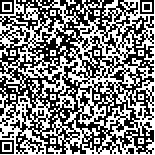| 引用本文: | 赵婷,于静,张惠兰,孙岩,冯杰,王婷婷,于鲁海,李红健.新疆维吾尔族、汉族癫痫患儿拉考沙胺血药浓度、临床疗效和安全性的差异性研究[J].中国现代应用药学,2022,39(12):1545-1550. |
| ZHAO Ting,YU Jing,ZHANG Huilan,SUN Yan,FEN Jie,WANG Tingting,YU Luhai,LI Hongjian.Study on the Differences in Plasma Concentration, Efficacy and Safety of Lacosamide in Xinjiang Uygur and Han Nationality Pediatric Patients with Epilepsy[J].Chin J Mod Appl Pharm(中国现代应用药学),2022,39(12):1545-1550. |
|
| 本文已被:浏览 978次 下载 643次 |

码上扫一扫! |
|
|
| 新疆维吾尔族、汉族癫痫患儿拉考沙胺血药浓度、临床疗效和安全性的差异性研究 |
|
赵婷1, 于静2, 张惠兰1, 孙岩2, 冯杰1, 王婷婷1, 于鲁海1, 李红健1
|
|
1.新疆维吾尔自治区人民医院药学部, 新疆维吾尔自治区临床药学研究所, 乌鲁木齐 830001;2.新疆维吾尔自治区儿童医院/北京儿童医院新疆医院神经内科, 乌鲁木齐 830001
|
|
| 摘要: |
| 目的 探讨新疆维吾尔族、汉族癫痫患儿拉考沙胺(lacosamide,LCM)血药浓度与临床疗效的相关性和差异性。方法 采用超高效液相色谱法测定100例维吾尔族癫痫患儿和194例汉族癫痫患儿的血药浓度,观察其疗效和不良反应,运用Logistic回归和受试者操作特征曲线分析患儿血药浓度和疗效的相关性。结果 维吾尔族患儿的LCM癫痫治疗有效率显著低于汉族患儿(65.00%和78.68%,P<0.05)。维吾尔族患儿的LCM血药浓度显著高于汉族患儿[(7.13±2.88)μg·mL–1和(6.27±2.53)μg·mL–1,P<0.05]。维吾尔族、汉族有效组患儿接受LCM单一治疗的比例显著高于无效组,接受LCM合并细胞色素P450酶诱导剂治疗的比例显著低于无效组(P<0.05)。维吾尔族、汉族癫痫患儿的不良反应发生率分别为29.00%和36.60%,发生不良反应的维吾尔族患儿的LCM血药浓度显著高于未发生不良反应组患儿[(8.20±3.60)μg·mL–1和(6.70±2.43)μg·mL–1,P<0.05]。结论 临床使用LCM治疗不同民族癫痫患儿的过程中,有必要监测LCM稳态谷浓度,以提高疗效和降低不良反应发生率。 |
| 关键词: 维吾尔族 汉族 拉考沙胺 血药浓度 疗效 |
| DOI:10.13748/j.cnki.issn1007-7693.2022.12.006 |
| 分类号:R969.4 |
| 基金项目: |
|
| Study on the Differences in Plasma Concentration, Efficacy and Safety of Lacosamide in Xinjiang Uygur and Han Nationality Pediatric Patients with Epilepsy |
|
ZHAO Ting1, YU Jing2, ZHANG Huilan1, SUN Yan2, FEN Jie1, WANG Tingting1, YU Luhai1, LI Hongjian1
|
|
1.Department of Pharmacy, People's Hospital of Xinjiang Uygur Autonomous Region, Institute of Clinical Pharmacy of Xinjiang Uygur Autonomous Region, Urumqi 830001, China;2.Department of Neurology, Xinjiang Hospital of Beijing Children/Children's Hospital of Xinjiang Uygur Autonomous Region, Urumqi 830001, China
|
| Abstract: |
| OBJECTIVE To explore the correlation and difference between the lacosamide(LCM) plasma concentration and efficacy in children with epilepsy in Xinjiang Uygur and Han nationality pediatric patients. METHODS The plasma concentration of 100 and 194 children with epilepsy in Uygur and Han nationality pediatric patients were determined by ultra-high performance liquid chromatography, and their curative effects and adverse reactions were observed. Logistic regression and receiver operating characteristic curve were used to analyze the correlation between plasma concentration and curative effect in pediatric patients. RESULTS The effective rate of LCM treatment in Uygur nationality pediatric patients was significantly lower than that in Han(65.00% and 78.68%, P<0.05). The plasma concentration of LCM in Uygur nationality pediatric patients were significantly higher than those in Han[(7.13±2.88)μg·mL-1 and (6.27±2.53)μg·mL-1, P<0.05]. The proportion of children receiving LCM monotherapy in the Uyghur and Han effective groups was significantly higher than that in the ineffective group and the proportion of children receiving LCM combined with cytochrome P450 enzyme inducers was significantly lower than that in the ineffective group(P<0.05). The incidence of adverse reactions in Uygur and Han nationality pediatric patients were 29.00% and 36.60%, respectively. The LCM plasma concentration of Uygur pediatric patients with adverse reactions was significantly higher than that of children without adverse reactions[(8.20±3.60)μg·mL-1 and (6.70±2.43)μg·mL-1,P<0.05]. CONCLUSION During the clinical use of LCM to treat children with epilepsy of different ethnic groups, it is necessary to monitor the steady-state trough concentration of LCM to improve the efficacy and reduce the incidence of adverse reactions. |
| Key words: Uygur nationality Han nationality lacosamide plasma concentration efficacy |
